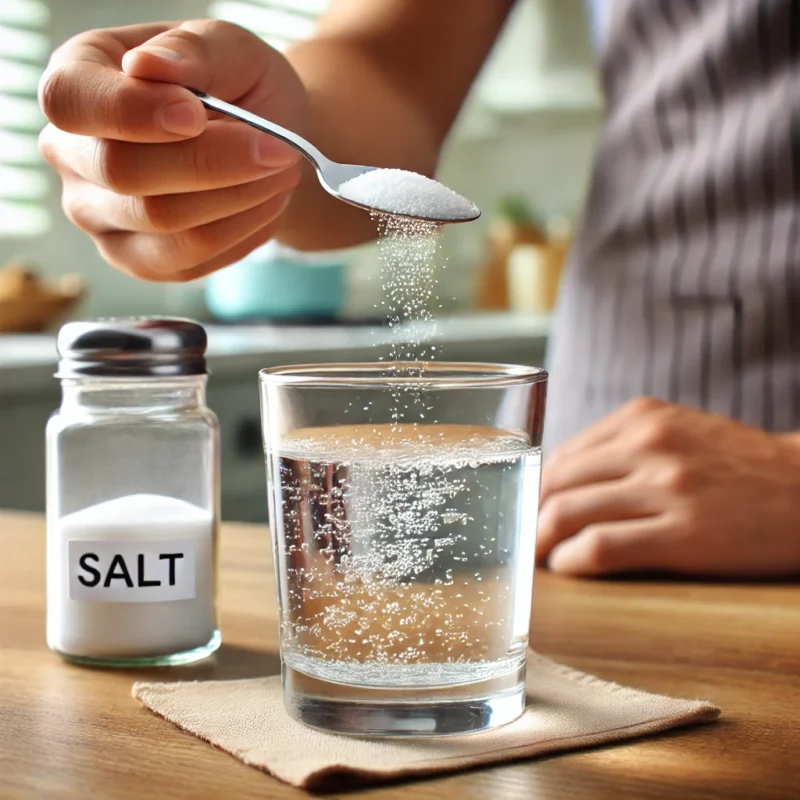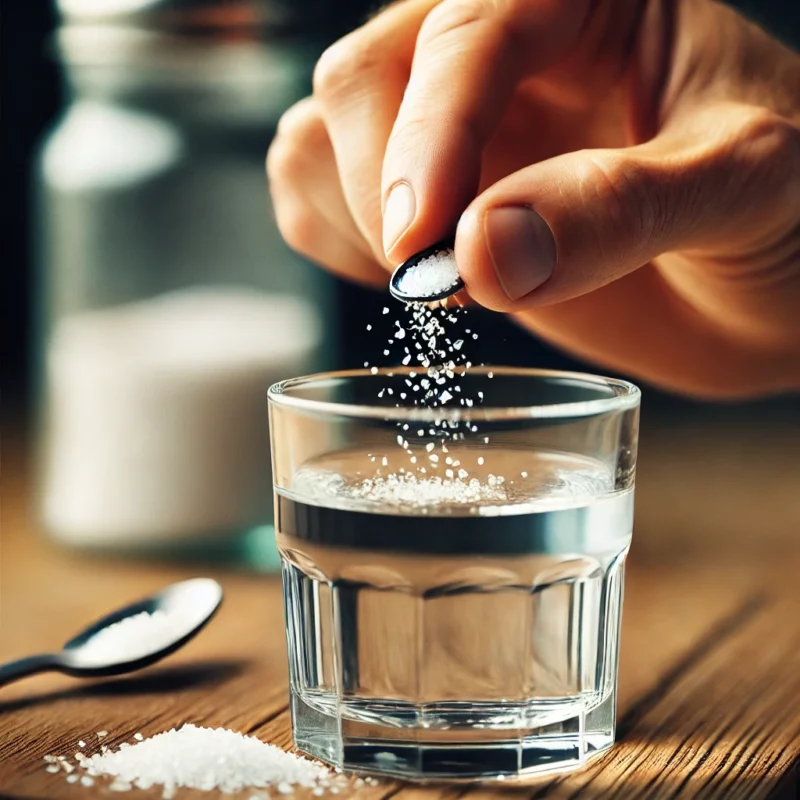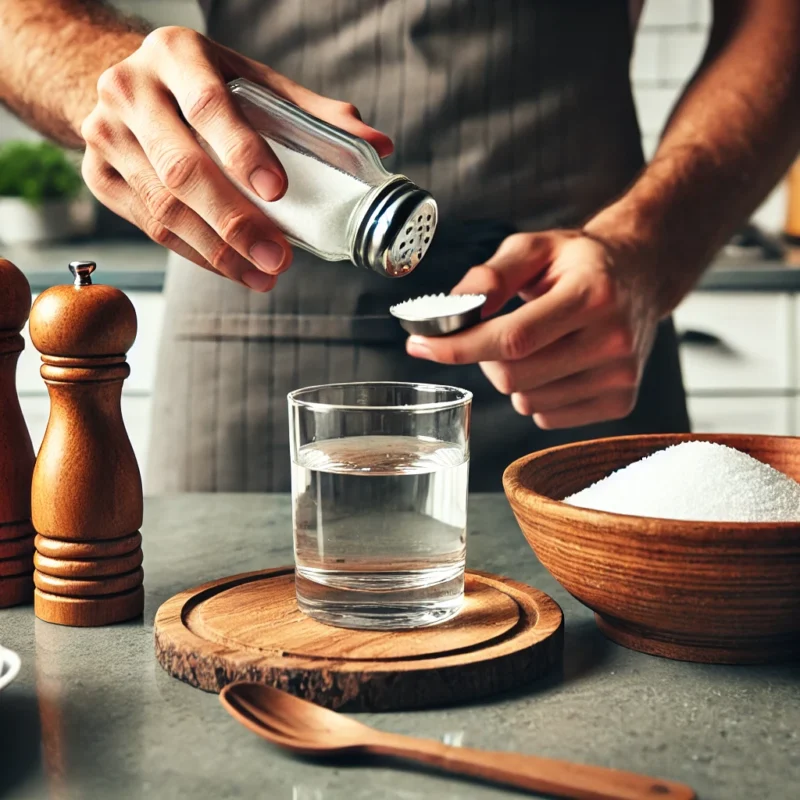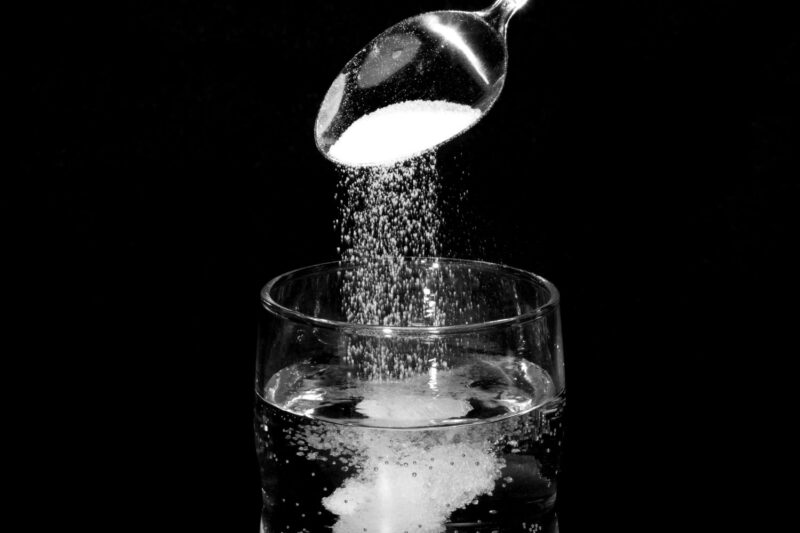Hydration is a fundamental aspect of maintaining good health, and it’s not just about drinking water. Proper hydration involves a balance of electrolytes, primarily sodium, to ensure your body functions optimally.
But how much salt should you add to water for proper hydration?
Salt in Hydration

Salt, or sodium chloride, is vital for maintaining the body’s fluid balance. Sodium helps regulate the amount of water in and around cells. It also aids in nerve function and muscle contractions.
Without adequate sodium, your body cannot retain water effectively, leading to dehydration, especially during intense physical activity or in hot climates.
Key Functions of Sodium in Hydration:
- Fluid Balance: Sodium helps maintain the osmotic balance, which is the distribution of fluids across cell membranes.
- Nerve Function: Sodium ions are essential for transmitting nerve impulses.
- Muscle Function: Sodium plays a critical role in muscle contractions, including those of the heart.
- Absorption of Nutrients: Sodium is necessary for the absorption of glucose and amino acids in the intestines.
How Much Salt to Add to Water
The amount of salt you should add to water depends on various factors, including your level of physical activity, the climate, and your individual health needs. Here are some general guidelines:
- Daily Intake: The average adult needs about 2,300 milligrams of sodium per day, according to the American Heart Association. However, during periods of heavy sweating (such as intense exercise or hot weather), you may need more.
- Electrolyte Solutions: Sports drinks typically contain about 110 milligrams of sodium per 8-ounce serving. This can serve as a guideline for making your own hydration solution.
- Homemade Hydration Solutions: For a homemade electrolyte drink, a common recipe is to add about 1/4 to 1/2 teaspoon of salt per liter (approximately 34 ounces) of water. You can also add a bit of sugar or honey and a squeeze of lemon for taste and additional electrolytes.
Hydration Strategy
Factors to Consider:
- Exercise Intensity and Duration: The more you sweat, the more sodium you lose. Endurance athletes may need higher sodium intake to compensate for sweat losses.
- Climate: Hot and humid environments increase sweat rates and sodium loss.
- Dietary Intake: If your diet is already high in sodium, you may not need to add much salt to your water.
- Individual Needs: Some people have higher sodium requirements due to medical conditions or medications.
Signs of Proper Hydration:
- Clear or Light Yellow Urine: Dark urine can indicate dehydration.
- Regular Urination: Going to the bathroom regularly is a sign of good hydration.
- No Thirst: Thirst is a late indicator of dehydration.
- Good Energy Levels: Proper hydration helps maintain energy and concentration levels.
Risks of Too Much Salt
While sodium is essential for hydration, it’s possible to have too much of a good thing. Excessive salt intake can lead to:
- High Blood Pressure: Too much sodium can cause the body to retain water, increasing blood pressure.
- Kidney Damage: High sodium levels can strain the kidneys and impair their ability to filter blood.
- Increased Risk of Heart Disease: Excessive sodium is linked to a higher risk of cardiovascular issues.
It’s important to strike a balance and not overdo salt intake, especially if you have conditions such as hypertension or kidney disease. Always consult with a healthcare provider if you have specific health concerns.
Practical Tips for Proper Hydration

- Drink Regularly: Don’t wait until you’re thirsty to drink water. Sip regularly throughout the day.
- Monitor Your Sweat: If you’re exercising or in a hot climate, be mindful of how much you’re sweating and adjust your salt intake accordingly.
- Use Electrolyte Tablets: These can be a convenient way to ensure you’re getting the right amount of electrolytes without overdoing it on salt.
- Eat a Balanced Diet: Foods like fruits, vegetables, and dairy products naturally contain electrolytes and can help maintain balance.
- Check Labels: If you’re using commercial sports drinks, check the sodium content to avoid excessive intake.
Case Studies and Real-World Examples
Knowing the application of sodium in hydration can be better illustrated through real-world examples and case studies.
- Endurance Athletes:
Endurance athletes, such as marathon runners and triathletes, have higher sodium needs due to prolonged periods of intense exercise. For instance, a marathon runner might lose 500-1000 milligrams of sodium per hour through sweat. To maintain performance and prevent hyponatremia (low sodium levels), they often consume electrolyte drinks or tablets during and after their events.
- Military Personnel:
Military personnel operating in hot climates or engaging in strenuous physical activity are at high risk of dehydration and sodium loss.
The U.S. military provides guidelines for salt intake and hydration to ensure soldiers remain fit for duty. They typically use specially formulated hydration solutions to replenish lost electrolytes.
- Patients with Hyponatremia:
Hyponatremia, a condition where blood sodium levels are too low, can occur in individuals who consume excessive water without adequate sodium, especially during endurance events.
For example, a case study of an ultramarathon runner who drank only water over 24 hours experienced severe hyponatremia, leading to hospitalization. Proper electrolyte balance could have prevented this.
The Science

Osmoregulation:
The body maintains fluid balance through osmoregulation, a process controlled by the kidneys, brain, and hormones. Sodium plays a critical role in this process.
When sodium levels are low, the hormone aldosterone increases sodium reabsorption in the kidneys. Conversely, when sodium levels are high, the hormone atrial natriuretic peptide promotes sodium excretion.
Sweat Composition:
Sweat contains about 500-700 milligrams of sodium per liter, but this can vary based on individual factors and environmental conditions. Replacing this lost sodium is crucial for maintaining hydration and electrolyte balance.
Sodium-Potassium Pump:
The sodium-potassium pump is a cellular mechanism that regulates the balance of sodium and potassium inside and outside cells.
This pump is essential for nerve impulse transmission, muscle contraction, and overall cellular function. Proper sodium levels ensure the pump operates efficiently.
Hydration Myths Debunked
Myth 1: Only Water is Needed for Hydration
While water is essential, it’s not the only factor in proper hydration. Electrolytes, particularly sodium, are crucial for maintaining fluid balance and preventing dehydration.
Myth 2: Salt is Bad for Hydration
Excessive salt can be harmful, but an appropriate amount is necessary for hydration. The key is balancing intake based on individual needs and activity levels.
Myth 3: Thirst is the Best Indicator of Hydration
Thirst is a late indicator of dehydration. It’s better to drink water and electrolyte solutions regularly, especially during exercise or in hot climates.
